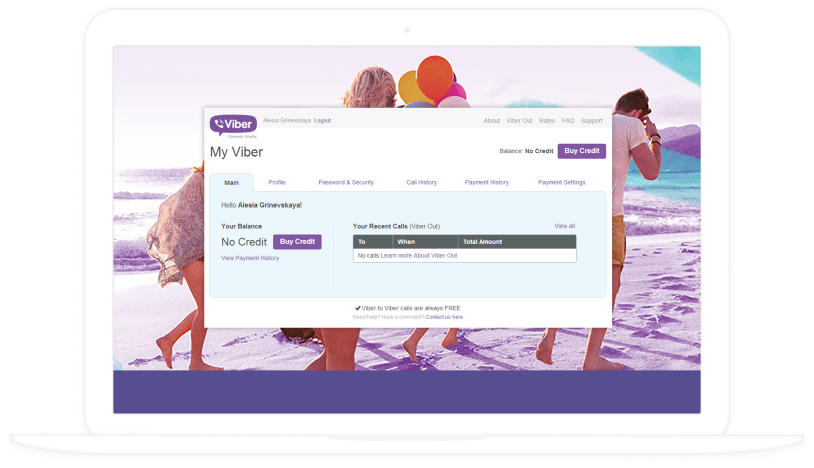Online Payment Gateway Integration
A Comprehensive Guide
ScienceSoft helps e-sellers design and build reliable and secure integrations with online payment gateways.
Online Payment Gateway Integration: Summary
Payment gateway integration is a way for ecommerce companies to smoothly accept digital payments from customers. An online payment gateway ensures fast and secure transfer of a customer’s personal and payment information between an ecommerce application and one or several payment processing systems.
Key steps to payment gateway integration
- Scope and plan the integration of the online payment gateway.
- Plan the project.
- Design the integration.
- Select the tech stack.
- Implement and test the integration.
- Support and evolve the integrated system.
Timelines: 2–5+ months, depending on the integration method.
Cost: $20,000–$100,000, depending on the integration complexity.
Team: a project manager, a business analyst, a solution architect, developers, a DevOps engineer, a QA engineer.
ScienceSoft can provide all necessary competencies to cover the end-to-end integration of an online payment gateway and helps companies optimize integration project time and costs.
Solutions that Integrate with an Online Payment Gateway
Visit ScienceSoft's dedicated pages to learn about the capabilities and specifics of the solutions that can benefit from the integration with an online payment gateway:
Types of Online Payment Gateways
There are several types of online payment gateways, each providing specific functionality and requiring a different approach to integration. ScienceSoft thoroughly weighs their benefits and limitations for each customer to choose the one that fits their specific payment handling needs best.
A hosted payment gateway
How it works:
The customer is redirected away from the company’s app checkout page to the payment gateway provider's website to complete a payment. After the payment is complete, the customer is redirected back to the app.
Payment processing and sensitive data storage is on the payment gateway provider’s side.
Benefits:
- A fast and easy way to enable digital payments with no need to establish direct integration with a payment processing network.
- No need to store sensitive data and obtain necessary security compliance certification.
Cautions:
- Lack of control over a payment gateway, which enhances operational and security risks.
- Unsatisfactory customer payment experience due to lengthy and complicated checkout.
- The scope of payment handling functionality is defined by the payment gateway provider and cannot be changed when needed.
A Direct Post payment gateway
How it works:
A company relies on a third-party payment gateway, but its clients don’t need to leave an app’s checkout page to complete a purchase. Upon payment initiation, sensitive customer and payment data is instantly transferred from the app’s back end to the third-party payment gateways’ server for processing and storage.
Benefits:
- Consistent user experience due to fast and convenient checkout.
- No need to store sensitive data and maintain PCI DSS compliance.
Cautions:
- High security requirements to the integration solution.
- Limited customization options in terms of payment processing functionality and customers’ checkout experience.
A self-hosted white-label payment gateway
How it works:
A prebuilt payment gateway integrates directly into the company’s application via ready-to-use or custom APIs, and the checkout process takes place within the app end to end.
Benefits:
- A large degree of control over processing and storage of customers’ personal and payment data.
- Flexibility in terms of payment gateway customization and branding.
Cautions:
- Full responsibility for protection and storage of sensitive data, which requires obtaining PCI DSS compliance.
- Substantial customization efforts to tailor the solution to a company’s business needs.
- Costly and time-consuming integration with legacy apps.
A self-hosted custom payment gateway
How it works:
A custom payment gateway integrates directly into the company’s application via custom APIs, and the checkout process takes place within the app end to end.
Benefits:
- Unique functionality (any chosen payment method, sophisticated recurring payments, etc.) tailored to a company’s specific digital payment processing needs.
- Complete control over the payment processing flow.
- Seamless integration even with legacy applications.
- No fees for the intermediary services.
- Minimized operational and security risks due to eliminated dependence on third-party payment processors.
- The ability to monetize a payment gateway by offering payment handling services to other companies.
Cautions:
The need to design a solution from scratch extends the integration project timeframes.
Responsibility for maintaining and supporting payment processing infrastructure and achieving PCI DSS compliance is fully on the company’s side.
A Sample Architecture of Online Payment Gateway Integration by ScienceSoft
To enable smooth processing of digital payment transactions, an online payment gateway should integrate with two main solutions:
- An application that hosts a checkout page for end customers to enter transactional data (purchasing details, personal information, a credit card number, etc.). This can be, for example, a merchant’s website, a mobile app of a SaaS product, or a customer portal.
- A payment processing system of a financial institution (an acquiring bank), an independent payment processing provider (e.g., PayPal, Stripe, Authorize.Net), or the company (in case of relying on in-house payment processing). The system verifies customers’ personal and financial data and transmits transaction details to payment processing network (e.g., a card network) that connects to the customer’s bank to finalize settlement. Note that cryptocurrency payment processing requires connection to the blockchain network to settle crypto funds.
Additionally, an online payment gateway can be integrated with an accounting system to timely trigger charging the recurring payments and instantly communicate data on the received payments for accurate recording and reporting of payment transactions.
A Roadmap for Online Payment Gateway Integration
The duration and approach to the online payment gateway integration depend on the specifics and scale of operations the integrated system should cover, capabilities and constraints of the solutions to be integrated and the company’s existing IT infrastructure. Below are described the typical steps we at ScienceSoft take to establish an integration with an online payment gateway.
Step 1. Analysis of as-is situation and requirements engineering
Duration: 1–3 weeks.
Accurate integration planning is the cornerstone of successful integration implementation with minimized risks and maximized ROI. At this stage, ScienceSoft's team:
1. Analyzes the company’s needs to be covered with online payment gateway integration. We conduct interviews with key stakeholders to collect requirements for the integrated solution, including:
- supported payment methods
- geographical availability
- customers’ checkout experience
- sensitive data security
- transactions volume to be processed
- transactions processing speed, and more.
2. Analyzes potential regulatory risks and compliance requirements, e.g., PCI DSS requirements.
3. Identifies and resolves conflicting requirements.
4. Defines the solutions to be integrated with an online payment gateway and data to be shared (customers’ personal information, credit card data, a crypto wallet address, etc.).
5. Analyzes the software to be integrated and the company’s existing IT infrastructure to understand its capabilities and constraints.
6. Figures out how payment data should flow and whether it needs to be transformed into a different format.
7. Checks how many communication protocols between integrated applications will be used based on the defined requirements.
Step 2. Project planning
Duration: 1–2 weeks.
During this stage, ScienceSoft defines:
- Project deliverables.
- Project duration and budget.
- Critical milestones, objectives and KPIs for the project.
- Risks and the ways to mitigate them.
- Expected TCO and ROI of the integration solution.
Step 3. Design of online payment gateway integration
Duration: 2–5 weeks.
1. Deciding on a best-fitting type of an online payment gateway to integrate:
- A hosted payment gateway.
- A direct post payment gateway.
- A self-hosted white-label payment gateway.
- A self-hosted custom payment gateway.
2. Designing an architecture and a feature set for a custom online payment gateway (if required).
3. Assisting clients in choosing an optimal market-available payment gateway (in case of relying on third-party software) according to their specific criteria and business priorities.
|
|
|
|
|
Best practice: Payment gateway providers typically charge a fee for their services, which includes a one-time gateway setup fee, a monthly gateway fee, a merchant account setup fee, and a fee for each transaction processed. The solutions they offer differ in cost, functionality, integration methods, and the level of security. We at ScienceSoft perform a detailed comparative analysis of possible solutions to help our clients get the required functionality and minimize the costs of relying on third-party services. |
|
|
|
4. Designing the architecture of both the integrated system and an integration solution (APIs, payment buttons, etc.) with attention to functional and non-functional requirements.
5. Designing a custom UI of a checkout page (optionally).
Step 4. Choosing a tech stack for the online payment gateway integration
Duration: 2–3 weeks.
At ScienceSoft, this stage covers:
- Defining techs and tools required to integrate an online payment gateway with relevant corporate solutions and an external payment processing system.
- Comparing different techs and tools in the context of documented business requirements.
- Selecting the optimal integration techs and tools.
Step 5. Online payment gateway implementation and testing
Duration: 2–8 weeks, depending on the integration method (custom payment gateway development and integration may take more than two times longer).
Important: Prior to the integration implementation, the company needs to:
- Establish a merchant account with a bank to receive customer payments.
- (in case of relying on a third-party payment gateway) Establish a merchant account with a payment processor (e.g., PayPal, Stripe, Authorize.Net).
The implementation of an online payment gateway integration solution with ScienceSoft usually has the following stages:
1. Developing a custom payment gateway (if required).
2. Depending on the chosen integration method:
- Developing and installing custom integration APIs.
- Implementing ready-to-use APIs.
- Building payment buttons and redirect scripts and incorporating them into the checkout interface.
3. Functional, performance, integration, and security testing.
|
|
|
|
|
Best practice: ScienceSoft’s in-house compliance experts are ready to consult about obtaining and maintaining PCI DSS compliance, if needed. |
|
|
|
Step 6. Support and evolution of the integrated system (optionally).
Duration: continuous.
ScienceSoft offers its customers continuous monitoring of the integrated system, its horizontal and vertical scaling to process and store larger amount of transactions, and extending a solution’s functionality based on a company’s evolving business needs.
Consider Professional Services for Online Payment Gateway Integration
Having 36 years of experience in building integration solutions and 18 years of expertise in financial software implementation, ScienceSoft can help with:
Online payment gateway integration consulting
- Analyzing business needs and eliciting requirements for an online payment gateway integration.
- Optimal payment gateway integration pattern.
- Architecture design, feature set, and tech stack for the integrated system and an integration solution.
- Security and compliance assistance.
- Delivering a roadmap for the online payment gateway integration, including a risk mitigation plan.
Online payment gateway integration implementation
- Analyzing your integration needs.
- Conceptualizing the integrated system and an integration solution.
- Developing a custom payment gateway (if required).
- Integrating an online payment gateway.
- Quality assurance.
- Support and evolution of the integrated solution (if required).
Why Choose Online Payment Gateway Integration with ScienceSoft
- Since 1989 in application integration services.
- Since 2007 in financial software development.
- 22 years in cybersecurity to ensure world-class protection of payment gateway integration solutions.
- Practical knowledge of 30+ industries, including ecommerce, BFSI, healthcare, IT, telecoms, professional services.
- Quality-first approach based on a mature ISO 9001-certified quality management system.
- Robust security management supported by an ISO 27001 certificate.
Typical Roles on ScienceSoft’s Online Payment Gateway Integration Teams
Project Manager
- Plans the project (goals, timeline, budget).
- Prioritizes the scope of work and monitors its execution.
- Coordinates the project team’s work.
- Communicates with stakeholders and reports to them.
Business Analyst
- Elicits, prioritizes, and documents requirements for the integrated system and the integration solution.
- Chooses the integration approach (in collaboration with a solution architect).
Solution Architect
- Chooses the online payment gateway integration approach (together with a business analyst).
- Architects the integrated system and an integration solution to meet business and technology requirements.
Developers
- Build custom integration code (APIs, redirect scripts, etc.).
- In case of a prebuilt gateway integration, set up triggers, choose resulting actions, and define customer and payment data to be shared.
- Develop the front end and the back end of a custom payment gateway (if required).
DevOps Engineer
- Automates software deployment by introducing a CI/CD pipeline.
- Monitors the integrated system security, performance, availability, etc.
QA Engineer
- Designs and implements a test strategy, a test plan and test cases for the integration solution and the integrated system to assure that the functional, security, and compliance requirements are met.
- Provides test summary reports.
Depending on the nature of the online payment gateway integration project, ScienceSoft can involve additional talents, for example, UX and UI designers to design a checkout page for the user-facing applications.
Sourcing Models for Online Payment Gateway Integration
Benefits of Online Payment Gateway Integration with ScienceSoft
|
|
Consistent collaboration. We closely collaborate with project stakeholders to get an in-depth understanding of their unique digital payment handling needs and ensure that the service fully covers their unique requirements to the integration. |
|
|
Prompt integration. We guarantee a quick project start (1–2 weeks) and apply established Lean, Agile, and DevOps practices to deliver smooth integration with minimal disruption to the clients’ business processes. |
|
|
Effort optimization. We help choose the optimal payment gateway type and integration pattern in terms of functionality and costs. To speed up integration, we use proven frameworks and ready-made components where possible. |
|
|
Focus on security. We ensure protection of an integrated system by implementing authorization controls for APIs, robust DDoS protection algorithms, firewalls, IDSs / IPSs, DLP systems, and other security tools. |
ScienceSoft’s Tech Stack for Online Payment Gateway Integration
ScienceSoft’s team usually relies on the following tools and technologies to ensure prompt implementation of reliable and secure integration solutions.
Databases / data storages
SQL
NoSQL
Clouds
Real-time data processing

DevOps
Containerization
Automation
CI/CD tools
Monitoring
Costs of Online Payment Gateway Integration
Below, our experts composed a list of major factors that affect integration cost and duration:
- The chosen integration method (hosted, self-hosted, direct post), which defines the integration pattern.
- (in case of opting for a market-available payment gateway) Setup fees for a gateway and a merchant account.
- (in case of opting for a custom payment gateway) The number and complexity of a solution’s functional modules plus costs to obtain mandatory certification.
- The required modifications of the integrated apps, both on the technical level and on the app logic level.
- Performance, availability, scalability, security requirements for the integrated system.

Based on ScienceSoft's experience, online payment gateway integration with ecommerce apps may cost around $20,000–$100,000, depending on the integration complexity.
Want to know the cost of your payment gateway integration project?
About ScienceSoft
ScienceSoft is a global IT consulting and software development company headquartered in McKinney, Texas. We provide end-to-end application integration services to help companies smoothly and securely connect their apps to an online payment gateway and start accepting digital customer payments. In our projects, we employ robust quality management and data security management systems backed up by ISO 9001 and ISO 27001 certification.










